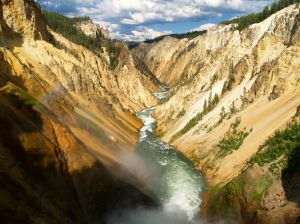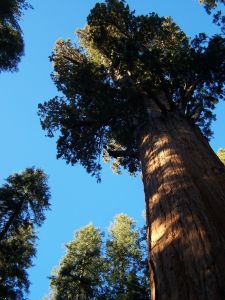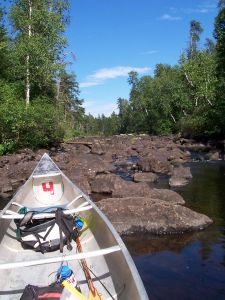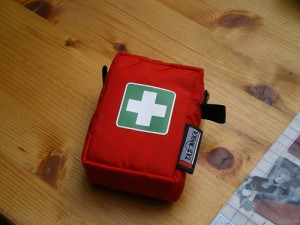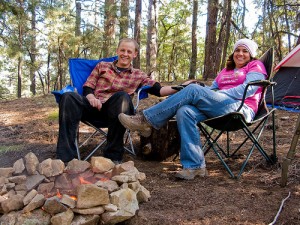
Happy Camping Couple; Photo by Tom Check
While dirt, bugs, and wildlife might not seem even remotely romantic, camping can be the perfect way to reconnect with your sweetie. What better way to rekindle the flame than to spend an evening in a secluded tent, cuddled up next to the one you love?
We all know that life gets hectic, and we often tend to take those we care about for granted. It can be difficult to stay close to our significant others, but the rugged outdoor nature of camping is an excellent way to get back in touch. Setting up your tent, for example, is a job too big for just one person. Working together with your loved one helps to reestablish a feeling of togetherness and reinforce your team-working skills.
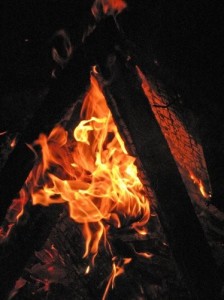
A Roaring Campfire - Photo by Chas Redmond
The thought of even trying to prepare food over a campfire is enough to frighten some people. But think of it this way – sitting close to a low, romantic fire cooking for the person you love most in this world. Grab a couple of thick steaks, some baking potatoes, a bottle of your favorite wine, and you’ll soon have a meal fit for even the hungriest of lovers. Poke a few holes in your potatoes and wrap them in aluminum foil before placing them directly onto the coals for simple baked potatoes. Season your steaks lightly and grill directly over the fire for three to five minutes per side depending on your preference for the perfect, simple steak.
Most people are used to the hectic pace of everyday life, and usually wind down by watching television or spending a few minutes on the computer. Camping removes all of these electronic luxuries, so finding ways to occupy your time can be difficult. A simple deck of cards can provide the perfect distraction for a long night in the wild. If you have an area to yourselves and feel adventurous, try a quick game of strip poker to heat up the night.
After a satisfying night of good food and good fun, retreat to your tent for some well-deserved rest. Try spending the night snuggled in a single sleeping bag, as opposed to separate beds. This close contact will not only help keep you warm in the chilly air, but also keeps you as close as possible to your loved one. Stay warm, sleep well, and wake up to the beautiful sunrise with a new appreciation for your significant other.

Romantic Sunrise - Photo by Pam Roth


